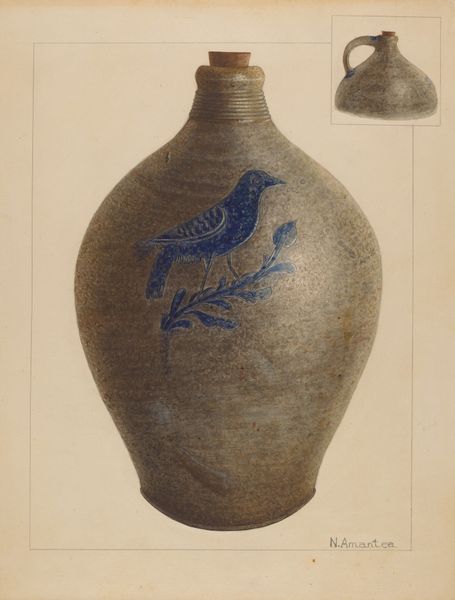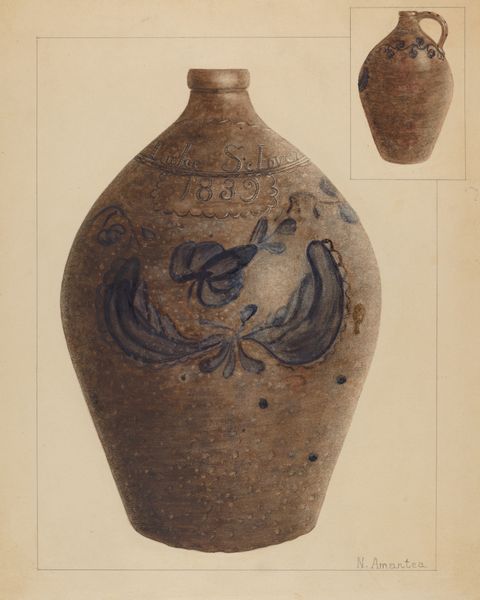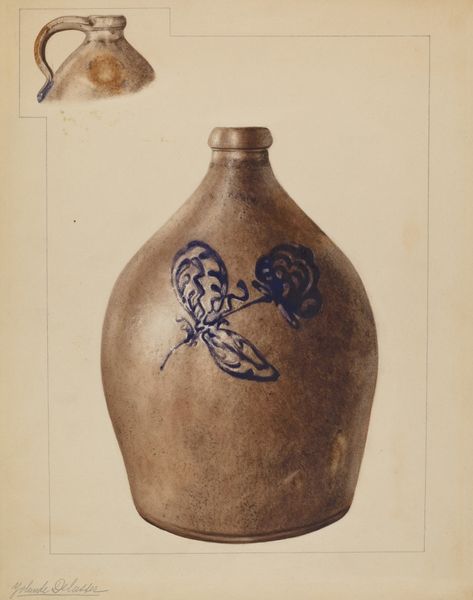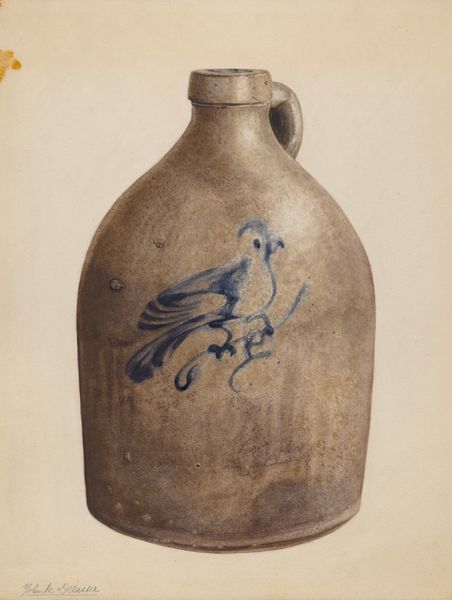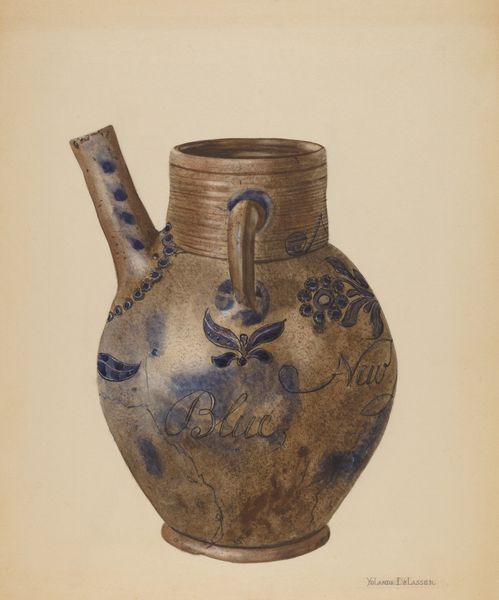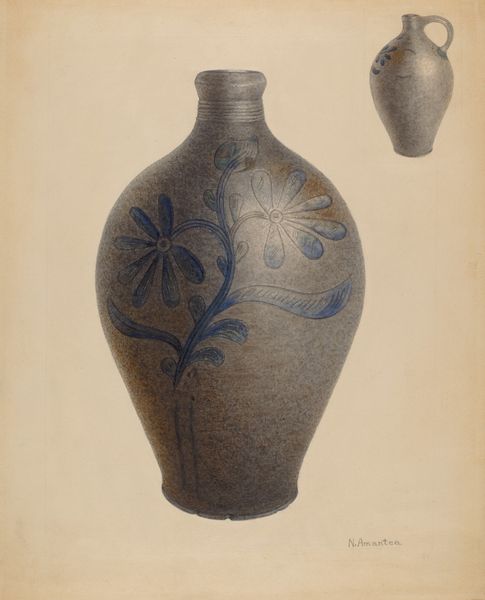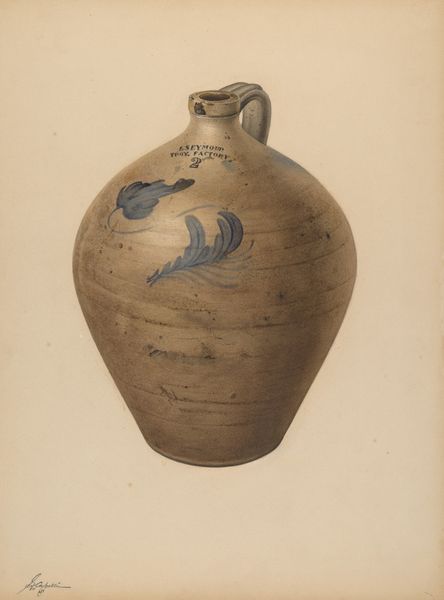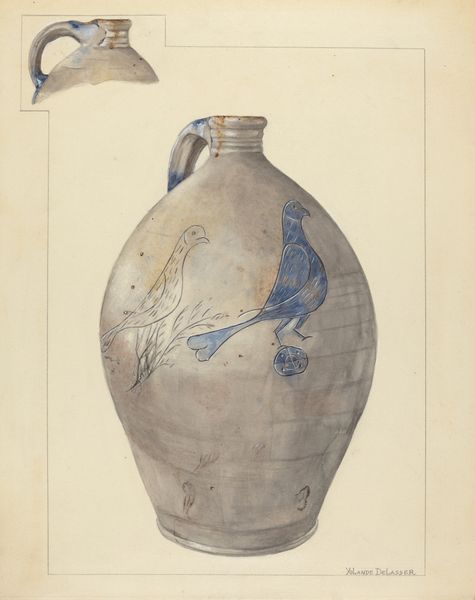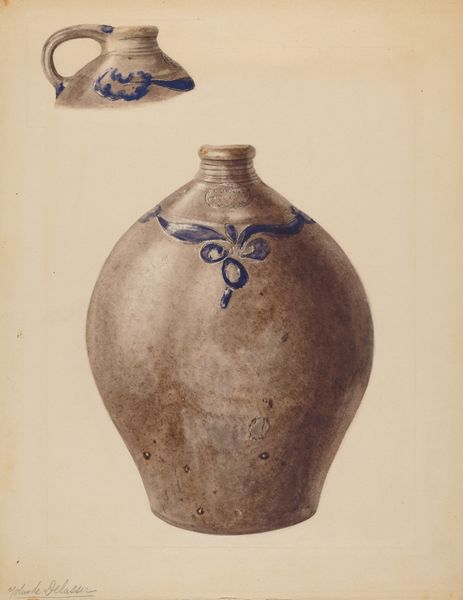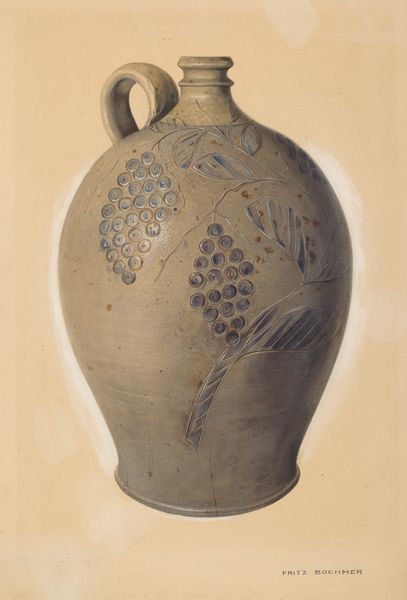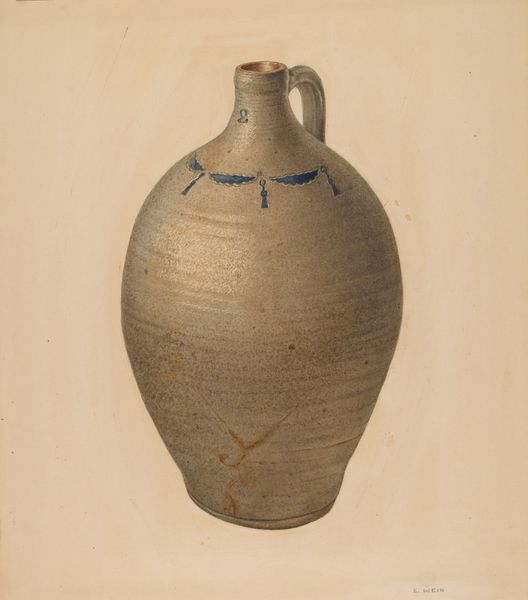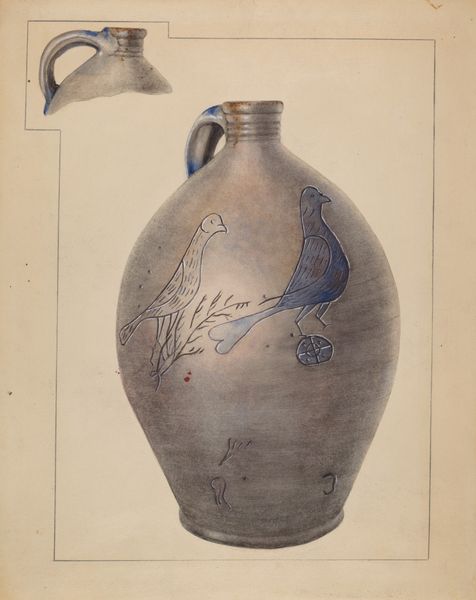
drawing, ceramic, watercolor
#
drawing
#
ceramic
#
watercolor
#
ceramic
#
watercolour illustration
Dimensions: overall: 30.2 x 22.5 cm (11 7/8 x 8 7/8 in.) Original IAD Object: 17" High 6 7/8" Dia(base)
Copyright: National Gallery of Art: CC0 1.0
Curator: Today, we’re looking at Charlotte Sperber’s “Jug,” a watercolor and drawing work from 1937 depicting, quite literally, a jug. Editor: My initial reaction is a feeling of quaintness. It's humble, somehow, a celebration of the everyday. It has this calm, unassuming presence, despite the rather stark contrast between the brown of the jug and the deep blue bird. Curator: The fact that she chose to represent it through drawing and watercolor, rather than the object itself in ceramic, for example, points towards an appreciation for its form and its function, elevating a utilitarian object to art. Do you think the watercolor makes a difference in how we see this object, versus if it were the actual ceramic jug itself? Editor: Absolutely. I find the bird immediately intriguing; perched delicately on the foliage. Birds have, throughout history, signified everything from freedom to divine intervention. In the context of a simple jug, it becomes quite a domestic, hopeful image, almost protective over the vessel it adorns. It might symbolize a simple connection to the natural world. Curator: Thinking about how and where it was created in the 1930s gives a new sense of the work: during the depression era the consumption and preservation of every resource were so important. The very act of illustrating a jug for posterity says a great deal about how things made for storing supplies came to embody a social significance of survival and value. Editor: And the jug itself becomes more than just a container. The muted, earth tones of the vessel serve to ground the object. Curator: Yes, almost giving an everyday, tangible, element a subtle power, doesn’t it? Editor: Indeed! I find the rendering choices, watercolor and drawing, perfectly align to highlight these intimate, quotidian scenes. The slight blurring suggests something personal—an object cherished perhaps, beyond its utilitarian role. Curator: This certainly provides us an unexpected lens through which to understand that period, revealing the stories objects hold that can shape artistic creation. Editor: Absolutely! Analyzing the symbology invites new perspective; each element in play contributing toward a much richer narrative of Sperber’s time.
Comments
No comments
Be the first to comment and join the conversation on the ultimate creative platform.
